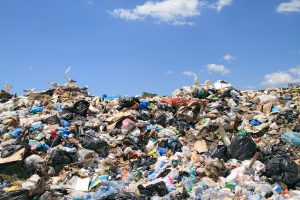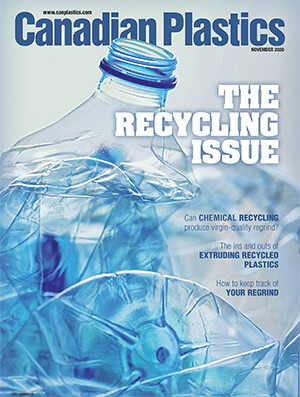
New plastic-eating enzyme could eliminate tons of landfill waste
Canadian Plastics
Research & Development SustainabilityThe enzyme variant created by researchers at The University of Texas at Austin can break down plastics that typically take centuries to degrade in just hours or days.

Photo Credit: Adobe Stock/kanvag
One of the biggest – and certainly the most visible – problems relating to plastics pollution is the billions of tons of plastic waste piling up in landfills and floating around in oceans, lakes and rivers.
Which is why it’s good news that researchers at the University of Texas at Austin have developed an enzyme variant they say can break down plastics that typically take centuries to degrade in just a matter of hours to days. The enzyme has the potential to supercharge recycling on a large scale that would allow major industries to reduce their environmental impact by recovering and reusing plastics at the molecular level.
“The possibilities are endless across industries to leverage this leading-edge recycling process,” said Hal Alper, professor in the McKetta Department of Chemical Engineering at UT Austin. “Beyond the obvious waste management industry, this also provides corporations from every sector the opportunity to take a lead in recycling their products. Through these more sustainable enzyme approaches, we can begin to envision a true circular plastics economy.”
The project focuses on PET, which is found in most consumer packaging, including cookie containers, soda bottles, fruit and salad packaging, and certain fibers and textiles. All told, PET makes up an estimated 12 per cent of all global waste.
The enzyme was able to complete a “circular process” of breaking down the plastic into smaller parts (depolymerization) and then chemically putting it back together (repolymerization). In some cases, these plastics can be fully broken down to monomers in as little as 24 hours.
Researchers at the Cockrell School of Engineering and College of Natural Sciences, at the University of Texas at Austin, used a machine learning model to generate novel mutations to a natural enzyme called PETase that allows bacteria to degrade PET plastics. The model predicts which mutations in these enzymes would accomplish the goal of quickly depolymerizing post-consumer waste plastic at low temperatures. Through this process, which included studying 51 different post-consumer plastic containers, five different polyester fibres and fabrics and water bottles all made from PET, the researchers proved the effectiveness of the enzyme, which they are calling FAST-PETase (functional, active, stable and tolerant PETase).
“This work really demonstrates the power of bringing together different disciplines, from synthetic biology to chemical engineering to artificial intelligence,” said Andrew Ellington, professor in the Center for Systems and Synthetic Biology, whose team led the development of the machine learning model.
Recycling is the most obvious way to cut down on plastic waste, but the problem is that, globally, less than 10 per cent of all plastic has been recycled. The most common method for disposing of plastic, besides throwing it in a landfill, is to burn it, which is costly, energy intensive, and releases dangerous gas into the air. Other alternative industrial processes include very energy-intensive processes of glycolysis, pyrolysis, and/or methanolysis.
Biological solutions take much less energy. Research on enzymes for plastic recycling has advanced a lot during the past 15 years, but until now, no one had been able to figure out how to make enzymes that could operate efficiently at low temperatures to make them both portable and affordable at large industrial scale. FAST-PETase can perform the process at less than 50°C.
Next, the University of Texas at Austin team plans to work on scaling up enzyme production to prepare for industrial and environmental application. The researchers have filed a patent application for the technology and are eying several different uses. Cleaning up landfills and greening high waste-producing industries are the most obvious, but another key potential use is environmental remediation – the team is looking at a number of ways to get the enzymes out into the field to clean up polluted sites.
“When considering environmental cleanup applications, you need an enzyme that can work in the environment at ambient temperature,” Alper said. “This requirement is where our tech has a huge advantage in the future.”
